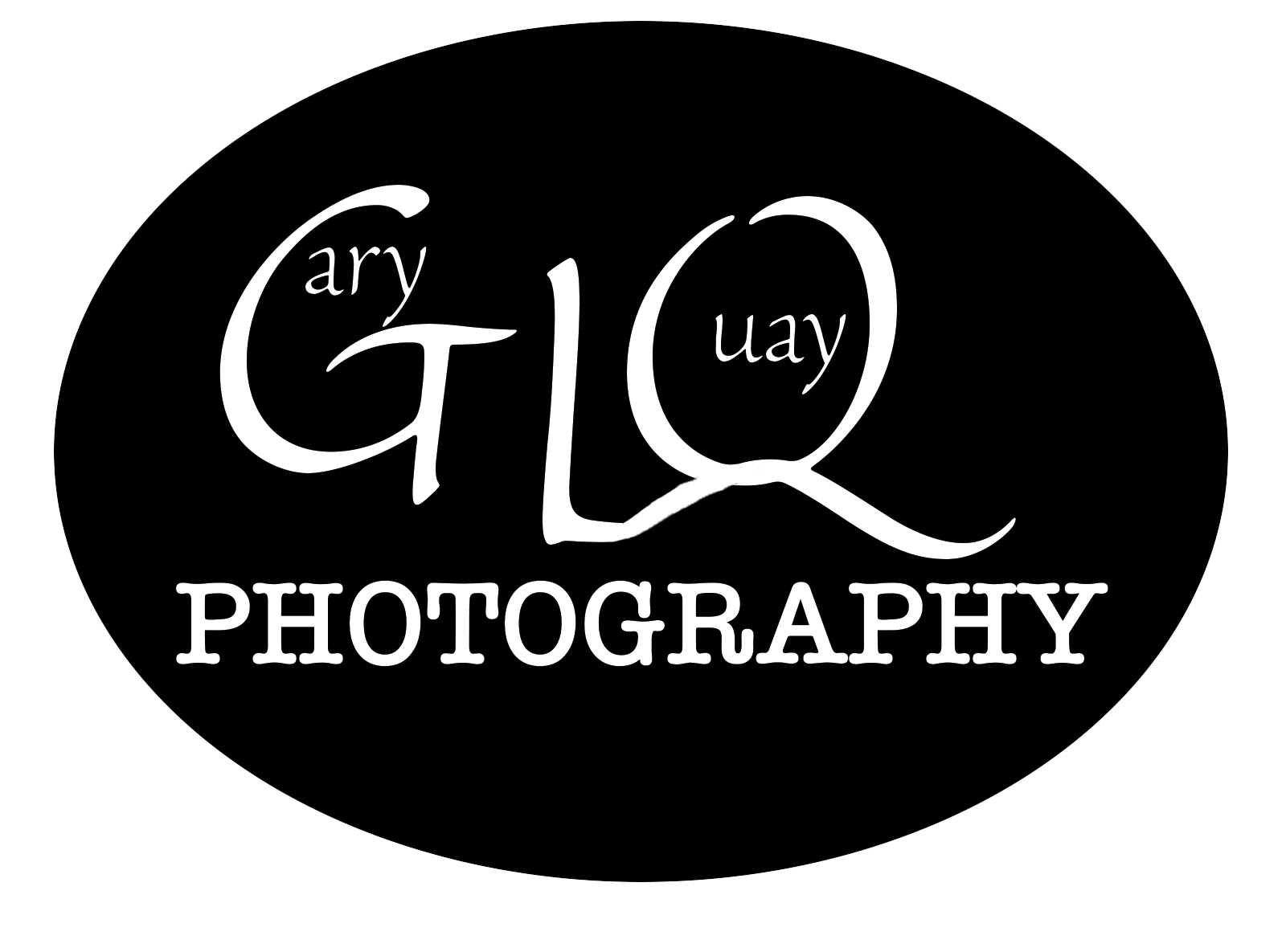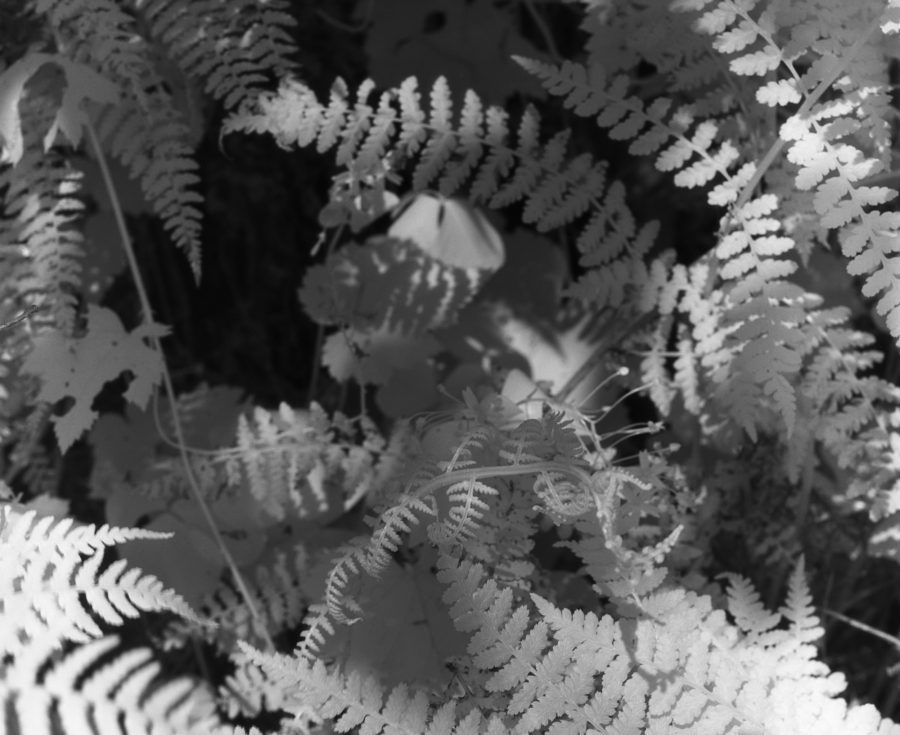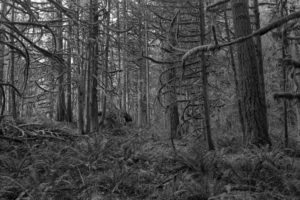A long time ago, I ran across a book called “The Art of Seeing.” Not to be confused with the book by Aldous Huxley, this described a way of seeing the world in such a way as to easily paint it in simple, black brush strokes. I only got about a half hour with the book, but the way something as simple as a fence line was described and panted caught my attention. It was the simplicity that mainly stuck with me.
Over the years, photography has become much like that for me. Occasionally, I will aspire to the wide angle, dramatic images that one sees on Flickr or Instagram, but they only briefly hold my attention. The Art of Seeing is taking the rules of composition, and chucking them out the window. Replacing them is a more intuitive process of moving around and scene until I like what I see. Generally, the pictures do conform to accepted rules of composition, but not always.
The Zen part is just being there with the scenery, not thinking too far ahead, and coming away with compositions that are more contemplative. All of my exhibits have had the word “Zen” in the title.

©2011 Gary L. Quay
I like the Klickitat River in southern Washington. It flows down from Mt Adams through an impressive canyon, and cuts a swath of green through an otherwise semi-arid region.
I liked the way the sun illuminates the leaves. The bright leaves illustrate the rule of thirds on the top and bottom of the picture, but the two trees break the rule by being almost dead center.
Camera: Sinar Alpina 4×5.
Lens: 15″ Wollensak Tele-Optar.
Film: Kodak Tri-X 320 developed in PMK Pyro.

©2021 Gary L. Quay
The mountain and the farm are the main focal points of the picture, but they are not quite in the places they should be for the rule of thirds. There are also three main elements: the field, the farm darker land behind it, and then the sky.
Camera: Toyo 45CF
Lens: 210 Schneider Symar (newly repaired)
Film: Famous Formats Atomic-X developed in Ilord Perceptol (stock)
Zen
What I think this method gives my photography is a sense of tranquility.

©2013 Gary L. Quay
The leaves were barely turning golden, and the contrast was very low. It was clearly a job for Ilford Ortho Plus. Ortho film is a high contrast film, which I tame somewhat with PMK Pyro. With all the uncertainties that arise with pyro developers, there are times when all of the hair pulling is worth it.
Apart from the cascading waterfall, the main elements are the rocks in the lower right corner, and the darker clump of trees in the upper left. That creates the impression of a diagonal line running right to left. It doesn’t hit the viewer over the head with the compositional elements, but allows them to make the eye wander across the picture.
Camera: Sinar Alpina 4×5.
Lens: 90mm Nikkor
Film: Ilford Ortho Plus developed in PMK Pryo.

©2016 Gary L. Quay
April 2016 in the Hood River Valley, home of the Fruit Loop, which is a series of roads that all connect back to Hood River, and sports about 25 orchards and lavendar farms. Most of them have farm stands that one can stop at and support local farmers.
The diagonal line (leading lines) of trees leads the eye away from the mountain. If I get a chance to correct that, I will try to place the mountain over the row with the leading lines.
Camera: Hasselblad 500CM
Lens: 50mm Zeiss Distagon
Film: Ilford Delta 400

©2021 Gary L. Quay
I took this in the Spring as the wildflowers were poking out in the Eastern Columbia Gorge. It took me all summer to finish off the roll due to all the wildfire smoke, but last weekend, I finally did it, and I developed it yesterday.
Sometimes I throw composition completely to the wind, and take a picture of chaos. Sometimes it works.
Camera: Hasselblad 500CM
Lens: 120mm Zeiss Sonnar
Film: Rollei RPX 400 developed in Kodak HC110 dilution B

©2021 Gary L. Quay
I caught some nice lighting at Rowena Crest in mid September, and finished off a roll of Rollei film that I had loaded in the Spring.
Sometimes, a strong element like the Rowena Loops creates good composition by itself. Placing it off center would imbalance the image.
Camera: Hasselblad 500CM
Lens: 40mm Zeiss Distagon
Film: Rollei RPX 400 developed in Kodak HC110 dilution B
The Art of Seeing
Although I studied composition in art classes in college, and when reading about photography, I found it difficult early on to keep those things in mind while I was out taking pictures. I was in awe of Oregon’s scenery (and I still am). It was difficult to get anything but that scenery to be front and center.
When I first started taking pictures seriously in the early 1990’s, I blew through roll after roll of 35mm film, and came away with little that anyone will ever see. I am self-taught, after all. Slowly, I learned what makes a good photograph, and what does not.

©2000 Gary L. Quay
I will let my description from 2009 speak for itself on this one. While it does not address the specific compositional elements of the picture, it does present some of the obstacles to getting the right picture, and what can happen if you take one anyway.
From 2009:
Being the parent tends to limit one’s ability to get out on foggy mornings like this particular one back in 2000. I used to pack up the car with my Hasselblad and head to the Columbia Gorge, the Powell Valley, Mount Hood, or whatever location floated my fancy or didn’t stretch my gas budget too thin. I don’t catch many sunrises anymore. Not with my camera, at least. Maybe in a few years, when I can get off of the Graveyard shift at work, and when the teenager is sent safely off to college, that will change. For now, I’m reliving the past.
It was an early Fall morning, and I drove my Geo Metro off into the fog. I headed for the Powell Valley, a place that I was newly discovering at the time. The vistas are breathtaking. Parking near them is a problem. Even a Geo Metro won’t hover in thin air, or park vertically on a cliff while I set up my tripod. Oncoming traffic can be an issue as well. Usually, I’m not in the mood for a long hike, due to limited time, and the fleeting nature of sunrises, so I try to park as close as I can to my subject as I can. I’m not very good at getting up a 3:00 AM to be in place to catch the first rays of the sun, either. I usually am frantically setting everything up as the clouds are turning purple, or orange. I wasn’t too worried about that on this particular morning. The fog had rolled in, as fog is wont to do on Fall mornings, and I had plenty of time to set up. I was actually hoping that the fog would just get up and move on, maybe to Troutdale or Gresham, or maybe even SE Portland, where it could hide some of the grafitti, because behind the fog was a beautiful valley of golden trees, pastures and ridgeline known as the “devil’s backbone.” It’s not what I would have called it, but I wasn’t an early settler to the area. The fog wasn’t budging, though. I took a few pictures, and headed back to get ready for work. The results are quite Zen.
Camera: Hasselblad 500 CM
Lens: 80mm Carl Zeiss
Film: Ilford PanF 50
I try not to place the subject dead center of the image, but sometimes it works, such as in the following picture.

©2012 Gary L. Quay
This one has some dramatic diagonal lines, but they are on the upper part of the picture. Leading lines are usually in the lower portion. Also, the darker part is turned upside down as well.
Camera: Super Speed Graphic with Graphmatic back.
Lens: 135mm Rodenstock Optar.
Film: Kodak Tri-X 320 developed in Kodak HC-110.
Composition is extremely important to photography, and any kind of pictorial art. Not letting it rule the roost can make good pictures, too.



